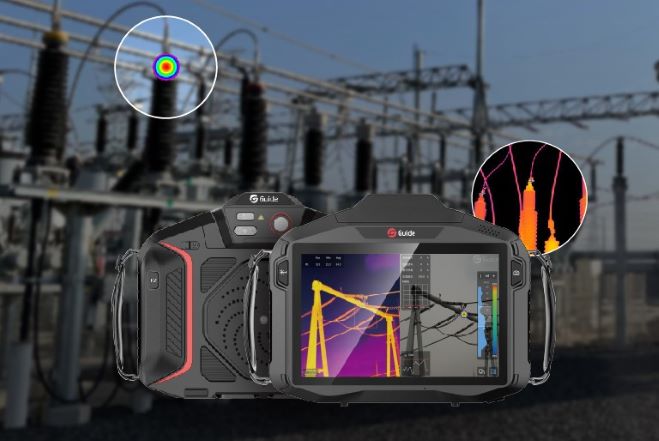The best thermographic cameras are designed to let you explore your environment in a whole new way. That is because they let you capture images in the infrared spectrum, meaning you can see, measure and capture temperature differences accurately. Whether you’re searching for thermographic cameras for building inspection, surveillance and security or any other application, there are a few things you should consider to ensure that you’re getting the best device for your needs.
How do thermographic cameras work?
Thermographic cameras work like regular ones, except they can detect invisible IR light and produce images of that radiation. These images are known as ‘thermograms’. The camera comprises different components, including a lens, a thermal sensor, processing electronics and a mechanical housing. All these work together to capture infrared energy (heat) produced by all objects with a temperature above zero degrees.
How to find the best thermographic camera
Like any other technology, not all thermographic cameras are manufactured equal. Apart from their price tag, a major differentiating factor between thermographic cameras is their capabilities, largely informed by their specifications. If you are looking to get the best thermographic cameras, it’s vital to take the following factors into consideration before you make a decision.
1. Temperature range
The temperature range refers to the highest and lowest temperature a thermographic camera can capture. It represents the set of temperatures the camera is designed and capable of measuring. This is a crucial specification to check, especially if you plan to use the camera to measure high temperatures like boilers, kilns or furnaces.
2. Spectral range
Also known as wavelength range, spectral range refers to the range of color wavelengths a thermographic camera can capture. To determine the ideal spectral range, you must consider the target object and its emissivity. Emissivity is the efficiency with which an object emits energy as thermal radiation due to its temperature.
There are three options of thermographic cameras if you’re looking to measure spectral range, and these include:
· LWIR: suitable for low-temperature measurements between -50 degrees Celsius and 900 degrees Celsius
· NIR: suitable for high-temperature measurements between 450 degrees Celsius and 2450 degree Celsius
· MWIR: suitable for low and intermediate temperatures with high precision
To decrease the risk of errors, it’s always a good idea to choose thermographic cameras with the shortest wavelength that can measure your expected temperature range. For example, if you’re looking to measure 700 degrees Celsius, you won’t need to measure values less than 450 degrees, so choosing a NIR thermographic camera is best.
3. Resolution
To answer this question, you first must establish a few things such as what you need to image, how far away you need to see it and the level of detail you want to achieve. Like visual cameras, thermographic cameras come with varying levels of resolution. Some cameras sport low resolutions like 80 x 60 pixels or 0.0003 megapixels, but it is always a good idea to go for the higher ones, especially if you plan to capture images from a distance. The rule of thumb is to go for high-resolution thermographic cameras if your objective is small object detection.
4. Sensitivity
The sensitivity of a thermographic camera refers to the Noise Equivalent Differential Temperature (NETD). It describes how well a thermal imaging detector can distinguish between very small differences in the thermal radiation of an image without being attributed to its noise. The higher the sensitivity (low number) of a thermographic camera, the finer the temperature details it can capture. You may not have to worry about this factor if your work involves detecting significant changes in temperature.
5. Field of view
Field of view is a measure of the angle at which an infrared thermographic camera sees a target object. This factor is critical because it allows you to identify the right optics for your particular application. The wider the angle of the lens, the greater the field of view that can be captured at any given moment. Some cameras come equipped with different lenses, which make them suitable for a variety of applications.
6. Image fusion
Image fusion refers to the capability of a thermographic-handled camera to combine thermal and digital images to present findings in temperature differences. This fusion of both images provides higher information content than any single input image.
7. Durability
Many models on the market claim impressive specs but are poorly built, which means you will have to part with another sum of money to get a replacement in a short while. A great thermographic-handled camera should be well-built such that it can endure rough use and continue to serve you for a long time.
Why choose the PS Thermographic Camera Series
When looking for the best thermographic, the PS Series from Guide Sensmart are some of the most outstanding models on the market. Calibrated to increase your productivity by making inspection, maintenance and troubleshooting work easier and more, these cameras come with cutting-edge detectors that allow for sharper thermal images and higher measurement accuracy. From its rotatable lens to screen structure and innovative features, the PS Series are the best thermographic cameras to beat.
The series consists of the following infrared thermographic cameras PS400, PS600, PS610, PS800 and PS610-15 – all of which deliver value for money.
Conclusion
Thermographic cameras are a significant investment, so you want to be sure you’re getting the right device from the right manufacturer that has your best interest at heart. There are many models out there, but if you’re looking for the absolute best thermographic-handled cameras, the PS Series from Guide Sensmart are your best bet. Each deployment of a model guarantees unique performance attributes that are sure to make your work better, faster and more accurate.













.svg)

(1).jpg)
.jpg)


